Inkjet printer
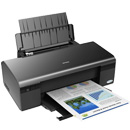
Inkjet printers represent the most widespread printing technology. Ink under pressure is selectively applied to the paper through a large number of fine nozzles (fine, small tubes).
The overpressure is generated in different ways: some use piezo technology, in which a voltage is applied to a special ceramic, which then expands (vice versa, as with a lighter). Alternatively, other manufacturers simply vaporize ink, which creates an overpressure.
Technically, piezo technology is the most mature.
Some manufacturers permanently connect the printheads to the ink cartridge (e.g. Hewlett-Packard for home use devices), which can extend the life of the printer if the mechanics are well designed. However, the printer parts are then more expensive.
Other printers allow the printhead to be replaced independently of the cartridge (e.g. replacement is recommended after a certain number of printed pages; Hewlett-Packard's professional inkjet printers) or the printhead is permanently attached to the printer (Epson) and can only be replaced by specialists.
If inkjet printers are not used for a longer period of time, clogging of the nozzles may occur. However, printing with alcohol-filled cartridges or wiping the print head with a fine, non-fluffy, damp or dry cloth often helps in this case. It is important to switch off inkjet printers using the device switch, as this is the only way to move the print head to the position where the least amount of ink can dry out. Today's inkjet printers work according to the drop-on-demand method; only the ink drops that are actually needed are produced. There were also devices in which drops were produced continuously (Continuos Drop), and the ink that was not needed was electrostatically diverted into the collection container and could be reused.
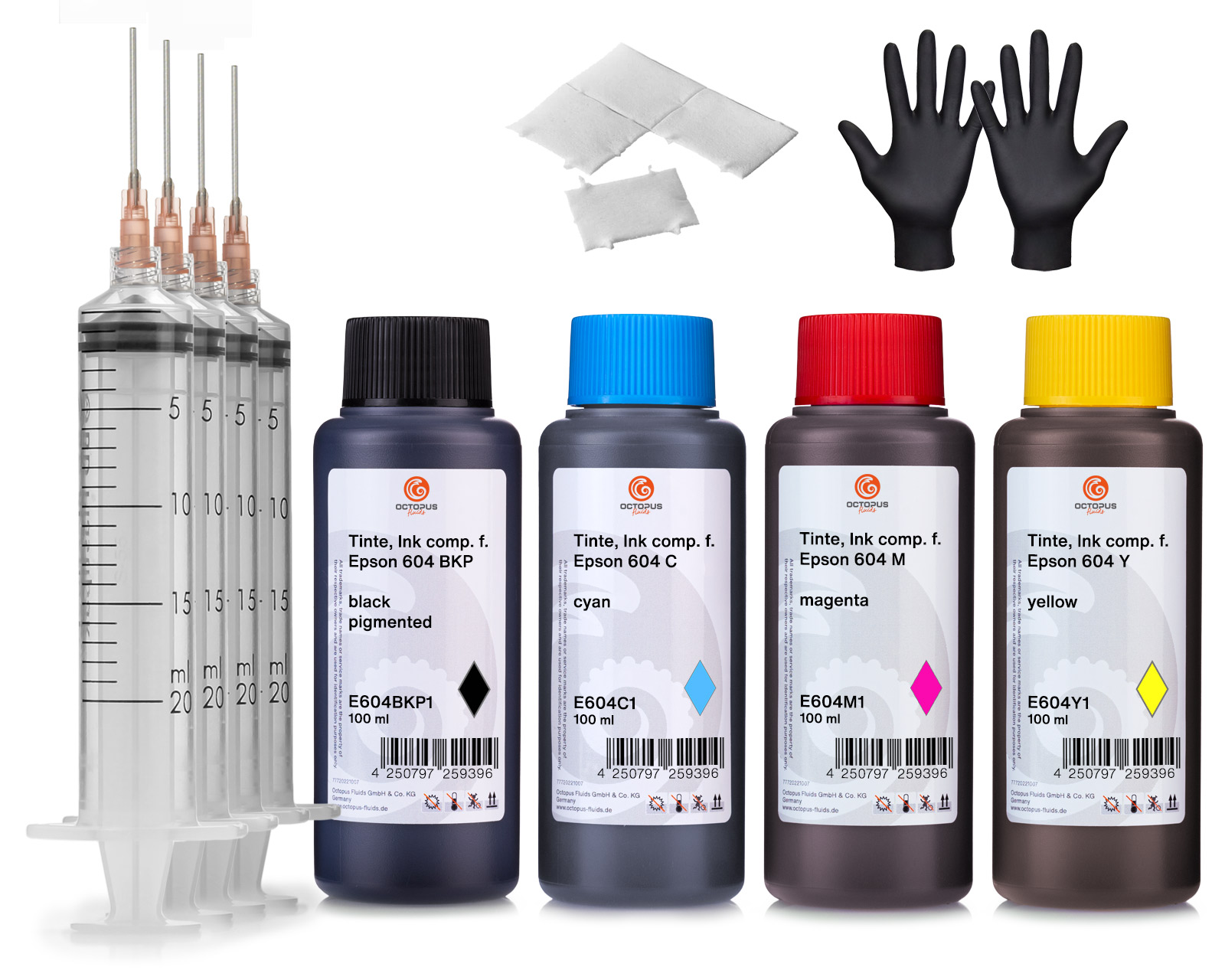 Octopus printer ink set compatible for Epson 604 ink cartridges, WorkForce 2950DWF 2930DWF
Octopus printer ink set compatible for Epson 604 ink cartridges, WorkForce 2950DWF 2930DWF
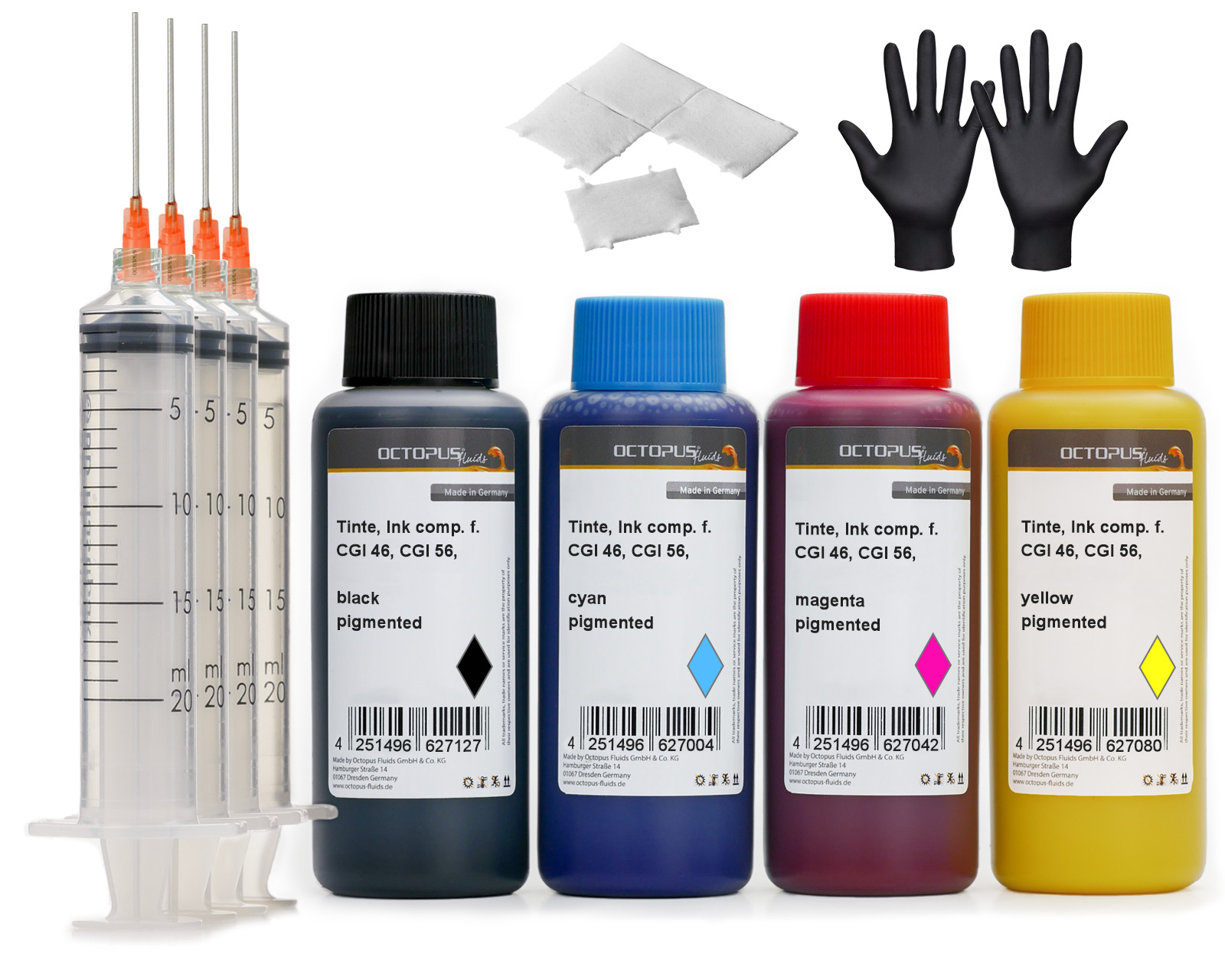 Printer Ink Set for Canon GI 46, GI 56 ink tank
Printer Ink Set for Canon GI 46, GI 56 ink tank
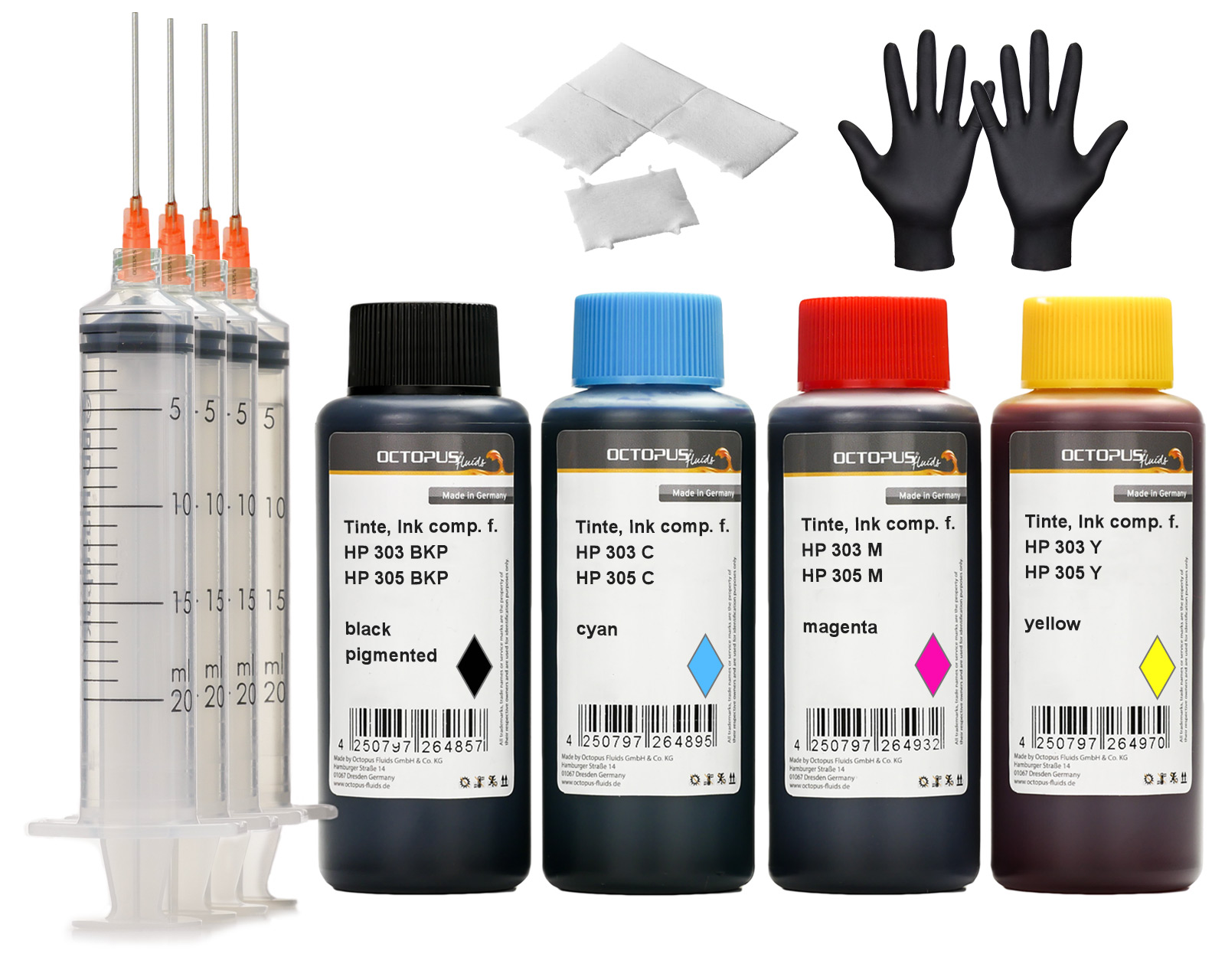 Refill ink set compatible for HP 303 and HP 305 Ink Cartridges, DeskJet, DeskJet Plus, Envy, Envy Pro
Refill ink set compatible for HP 303 and HP 305 Ink Cartridges, DeskJet, DeskJet Plus, Envy, Envy Pro
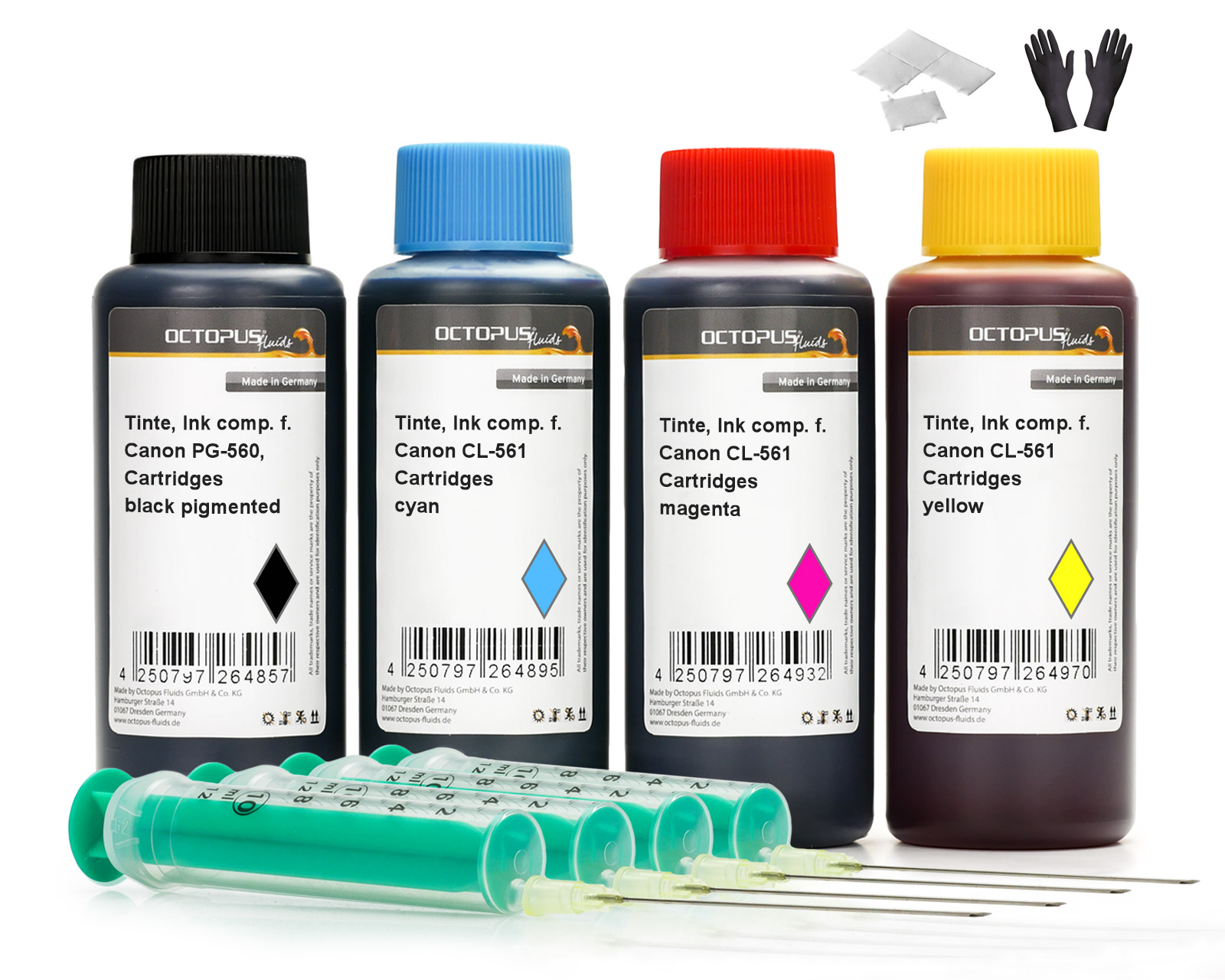 Octopus printer ink set compatible for Canon PG-560, CL-561 ink cartridges, Canon Pixma TS 5300, 7400
Octopus printer ink set compatible for Canon PG-560, CL-561 ink cartridges, Canon Pixma TS 5300, 7400
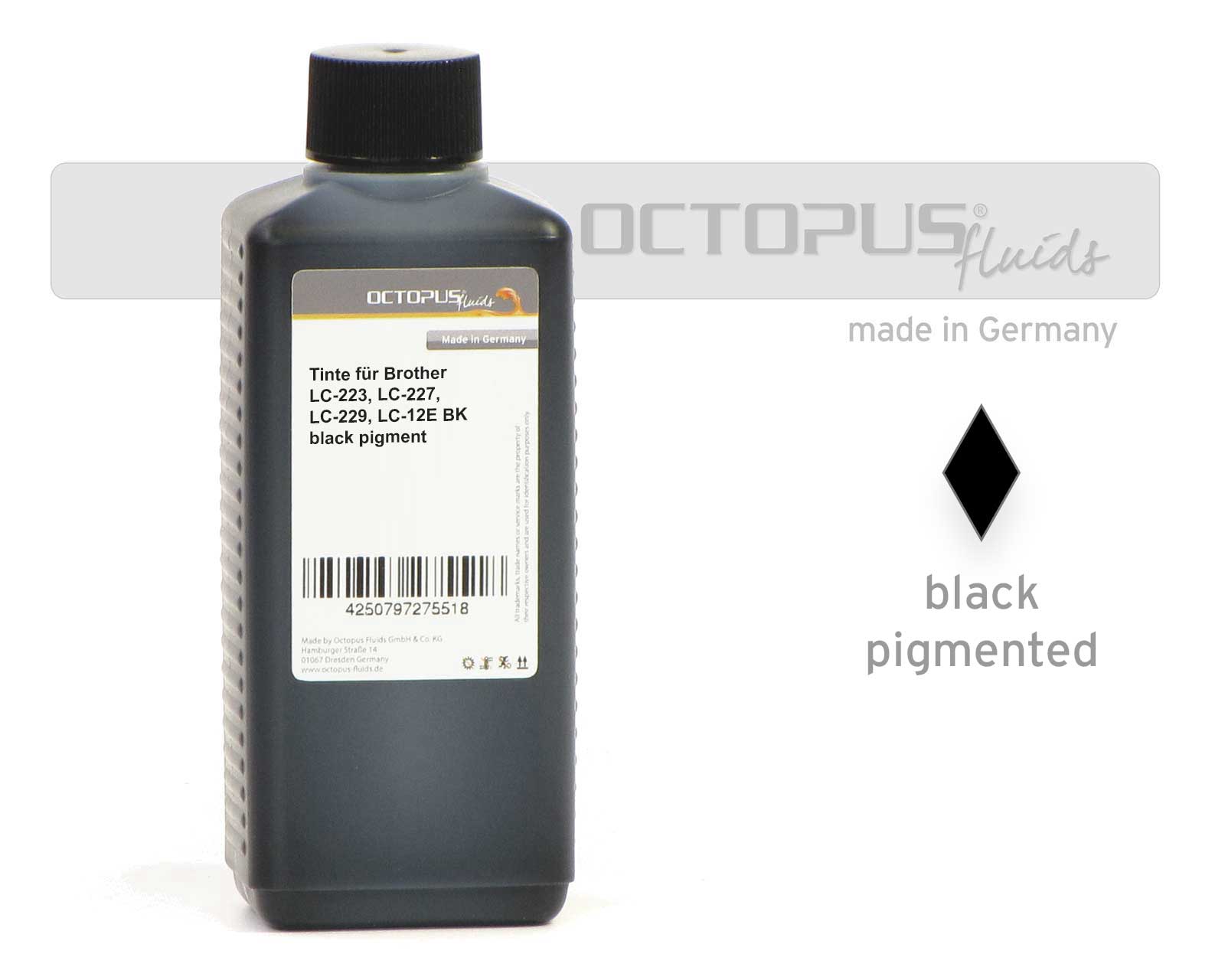 Refill ink comp. with Brother LC-223, LC-227, LC-229, LC-12E black pigmented
Refill ink comp. with Brother LC-223, LC-227, LC-229, LC-12E black pigmented
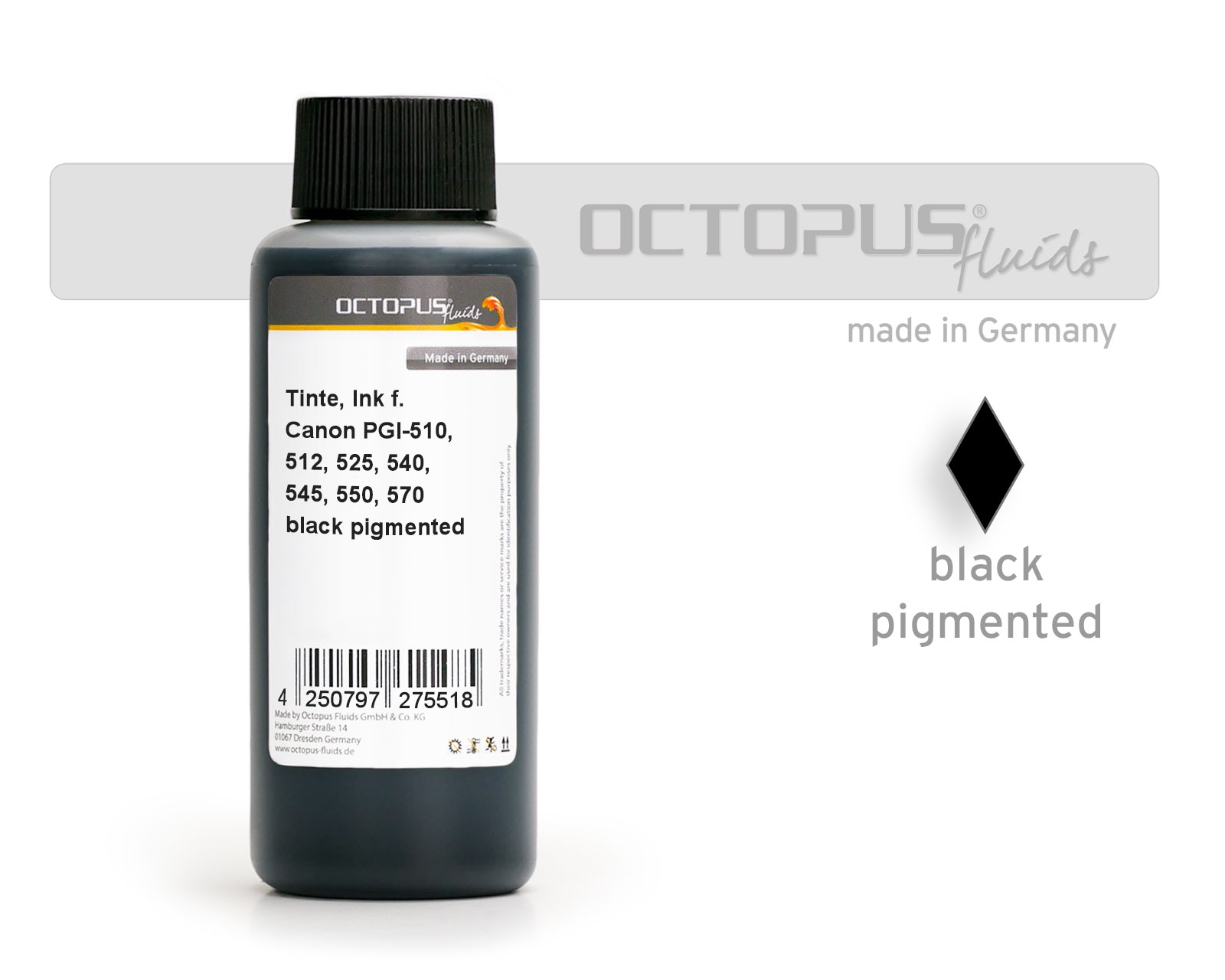 Ink for Canon PGI-525, 550, 555, 570, PG-540, 545, 510, 512 pigm. black
Ink for Canon PGI-525, 550, 555, 570, PG-540, 545, 510, 512 pigm. black
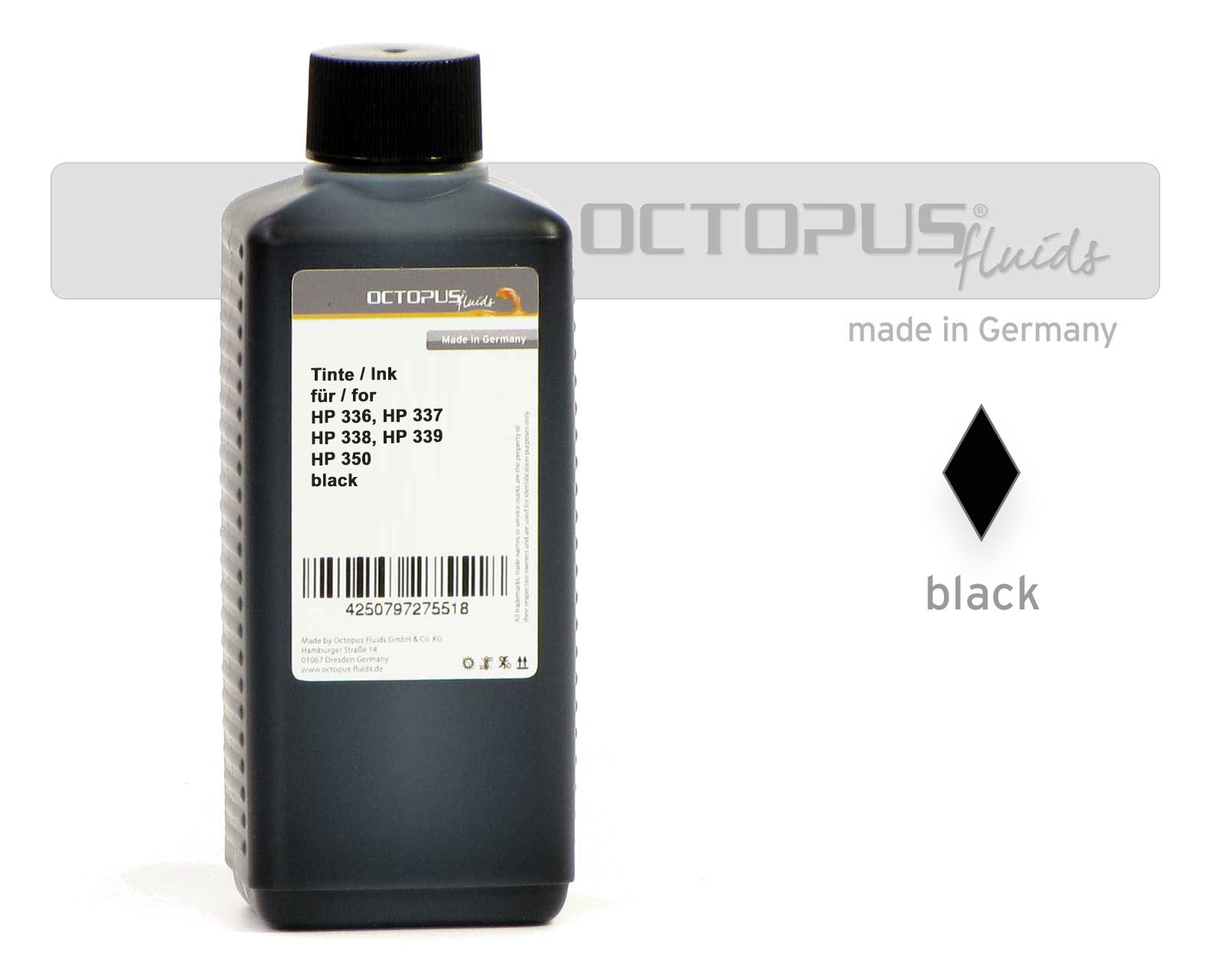 Refill ink compatible for HP 336, 337, 338, 339, 350, 350 XL pigmented black
Refill ink compatible for HP 336, 337, 338, 339, 350, 350 XL pigmented black







